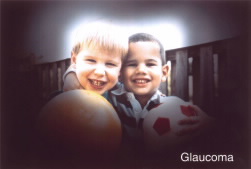FOR IMMEDIATE RELEASE
ACS News Service Weekly PressPac: March 24, 2010
Developing a test to save eyesight by detecting glaucoma years earlier
EMBARGOED FOR RELEASE: Wednesday, March 24, 4:30 p.m., Eastern Time
Scientists are reporting progress toward a test that could revolutionize the diagnosis of glaucoma — the second leading cause of vision loss and blindness worldwide — by detecting the disease years earlier than usually happens at present. They reported the findings here today at the 239th National Meeting of the American Chemical Society (ACS).
Glaucoma is a group of eye disorders that can damage the optic nerve that carries visual information from the eye to the brain. It usually occurs when fluid pressure inside the eye slowly increases over time. The fluid presses on the optic nerve, and damages it. Glaucoma affects about 70 million people worldwide, including about 2 million in the United States.
In their ACS report, Yu and colleagues described development and early testing of a potential new early diagnostic method. It gives a mainstay tool in chemistry labs — Raman spectroscopy — a potential new life in medicine. The technique as used in chemistry and other laboratories involves focusing a beam of infrared laser light — invisible to the human eye — into a test sample to get information about the sample’s composition. Yu‘s method uses Raman spectroscopy to shine laser light through the pupil of the eye. Optic nerve cells (retinal ganglion cells) inside the eye scatter the light, producing a rainbow-like “spectrum” or pattern revealing the chemical composition of the cells. Scientists can then use that snapshot to identify biochemical changes in retinal cells that announce the presence of glaucoma.
![]()
Contact
Science Inquiries: Michael Woods, Editor, 202-872-6293
General Inquiries: Michael Bernstein, 202-872-6042

have this view of the world, a risk that
might be reduced by a new early diagnostic
test for the common eye disease.
Credit: National Institutes of Health
(High-resolution version)

